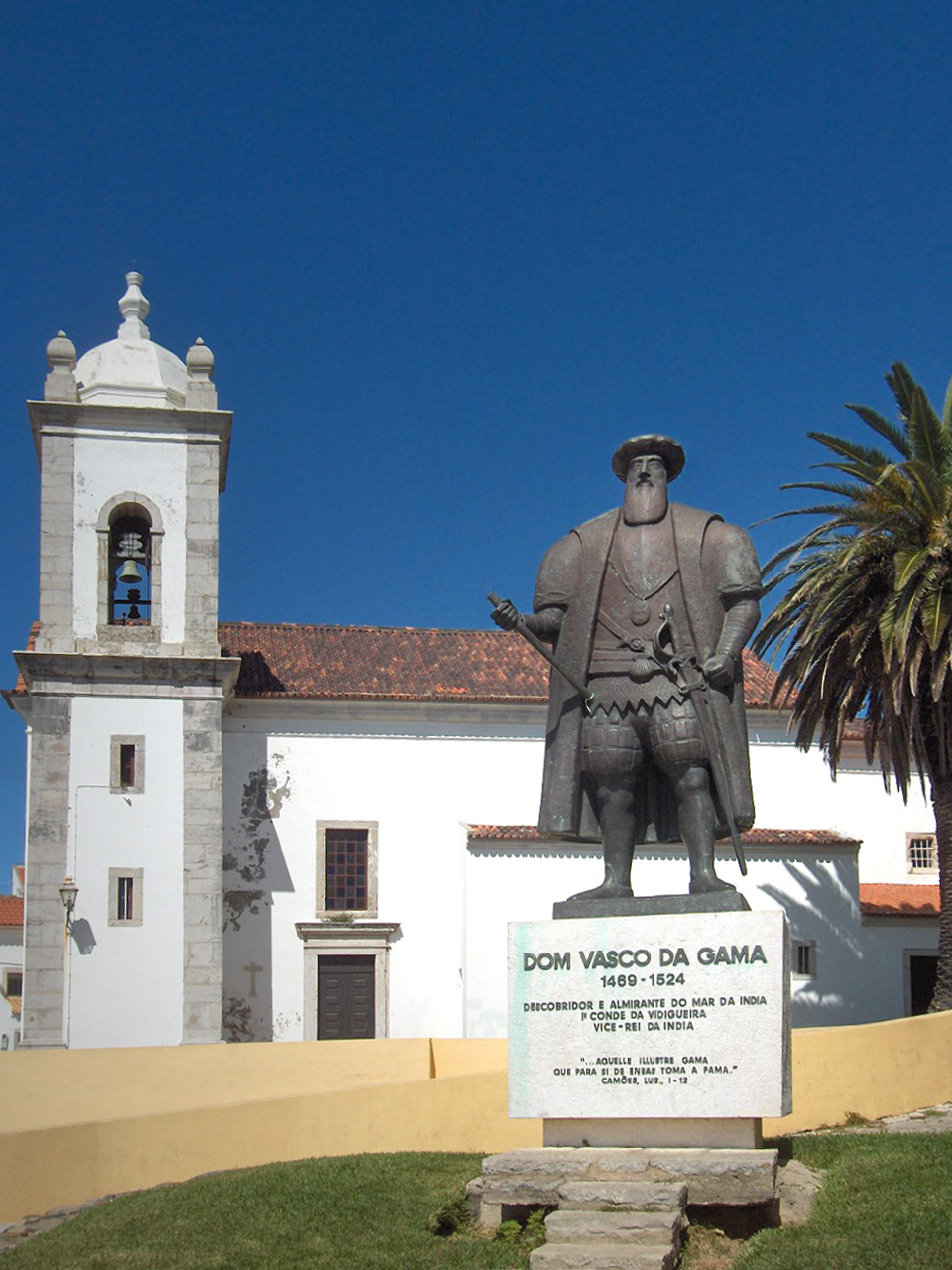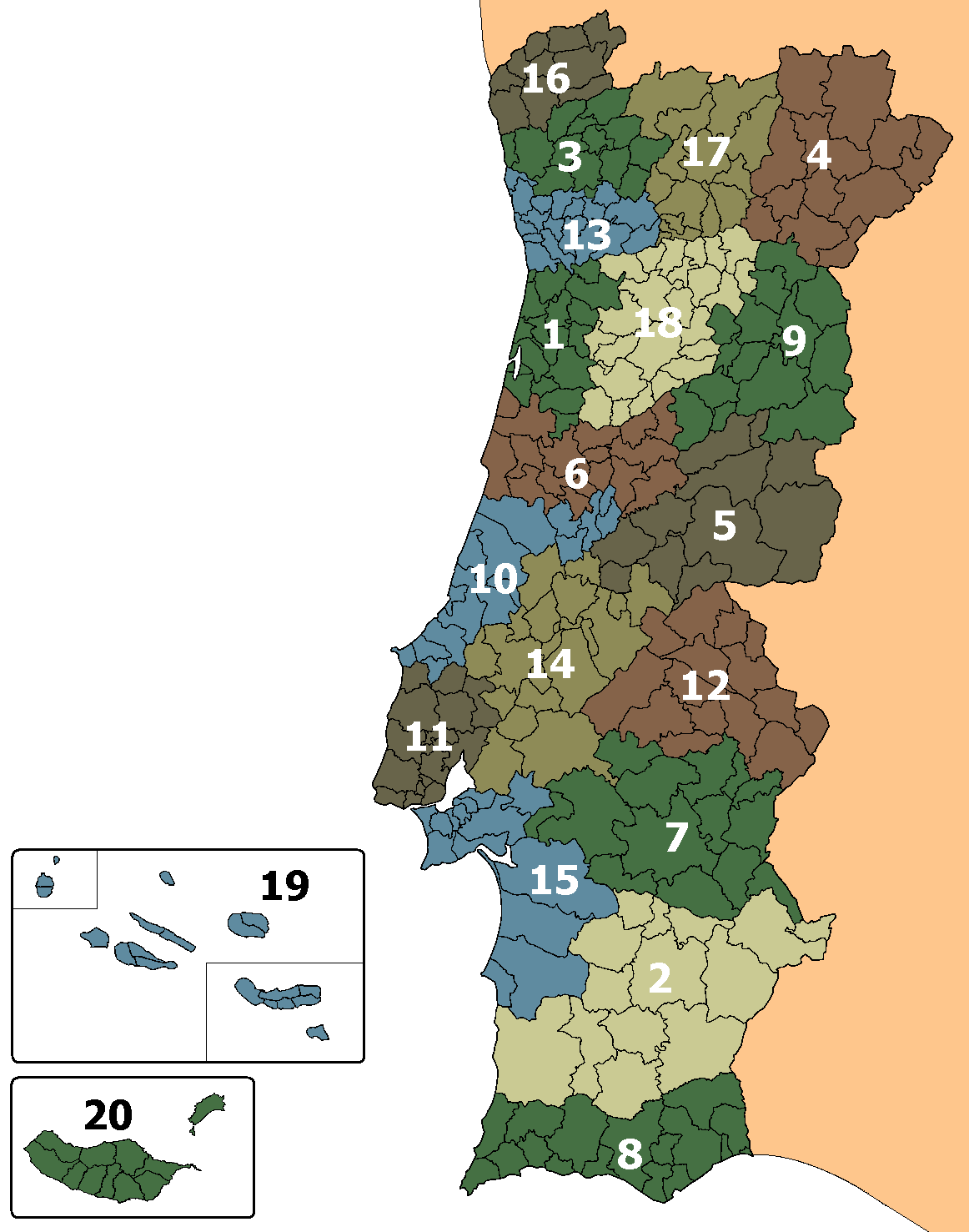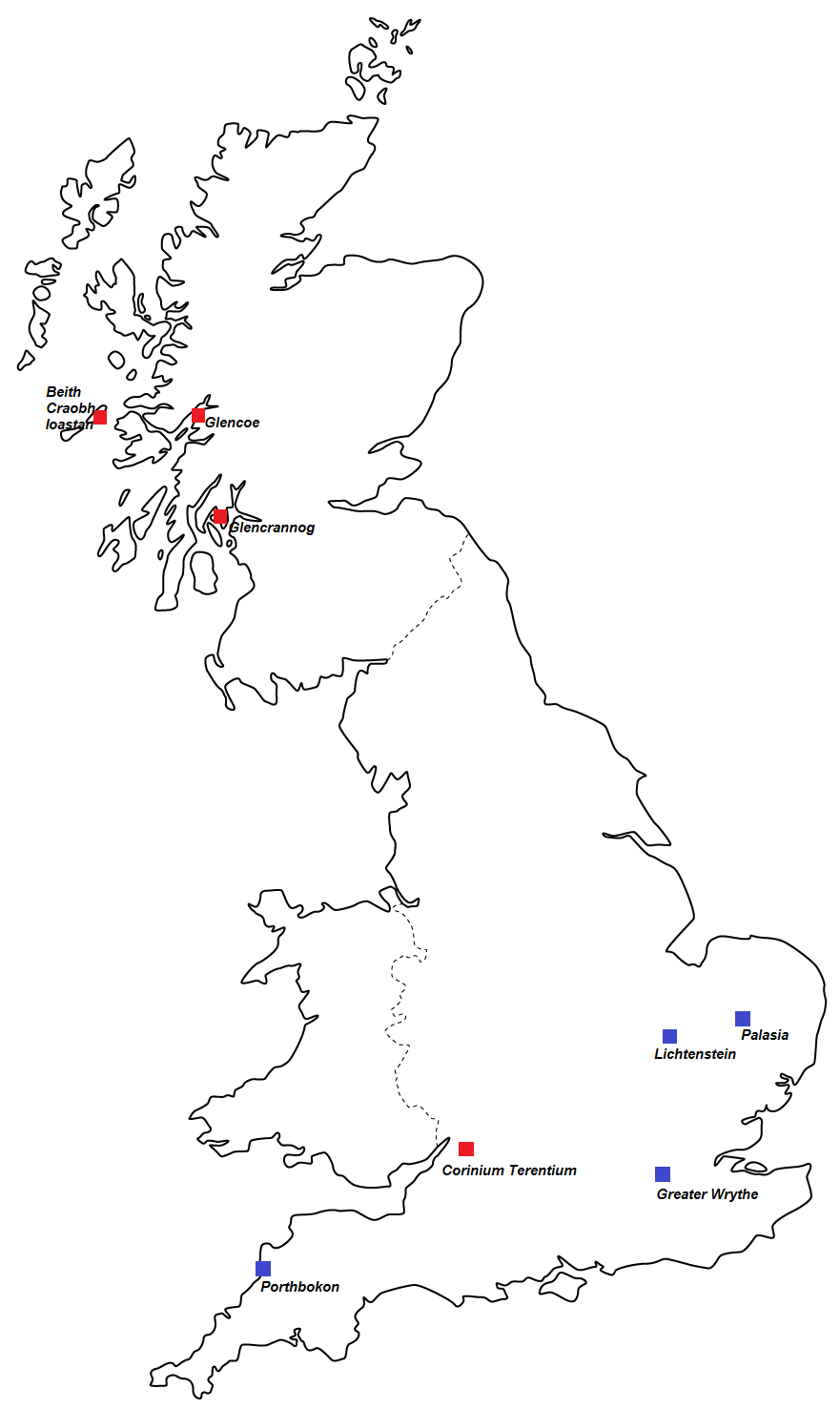|
Vidigueira
Vidigueira (, ), officially the Town of Vidigueira (), is a town and a municipality in the District of Beja in Portugal. The population in 2011 was 5,932, in an area of 316.61 km2. The present Mayor is Manuel Rosa Narra, elected by the Unitary Democratic Coalition. The municipal holiday is Ascension Day. The archaeological site of the Roman Ruins of Villa Áulica and Convent of São Cucufate are situated near Vidigueira. Parishes Administratively, the municipality is divided into 4 civil parishes ('' freguesias''): * Pedrógão * Selmes * Vidigueira * Vila de Frades Notable people * Vasco da Gama (c.1460s – 1524) the Portuguese navigator, was made Count of Vidigueira by King Manuel I on the return from his discovery of the maritime route from Europe to India * Achilles Statius (1524 in Vidigueira – 1581) humanist poet and commentator * Forebears of radical Dutch philosopher Baruch Spinoza (1662-1677) lived in Vidigueira since at least the 16th century, before escapi ... [...More Info...] [...Related Items...] OR: [Wikipedia] [Google] [Baidu] |
Count Of Vidigueira
Count of Vidigueira (in Portuguese ''Conde da Vidigueira'') was a Portuguese comital title of nobility awarded by King Manuel I of Portugal to Don (honorific), Dom Vasco da Gama, who discovered the maritime route from Europe to India. The title was created by a royal decree issued in Évora on 29 December 1519, after an agreement signed in 7 November between Vasco da Gama and Dom Jaime, Duke of Braganza, who ceded him the towns of Vidigueira and Vila de Frades, granting Vasco da Gama and his heirs and successors all the revenues and privileges related. Vasco da Gama was then the 1st Admiral of the Seas of India and in 1524 would become the 6th Governor of Portuguese India under the title of 2nd Viceroy. Following the expulsion of the Philippine Dynasty from the throne of Kingdom of Portugal, Portugal in 1640, the new King John IV of Portugal granted this family the new title of Marquis of Nisa, Portugal, Nisa (Portuguese: ''Marquês de Nisa'') by a royal decree dated October 18, 1 ... [...More Info...] [...Related Items...] OR: [Wikipedia] [Google] [Baidu] |
Vasco Da Gama
Vasco da Gama ( , ; – 24 December 1524), was a Portuguese explorer and nobleman who was the Portuguese discovery of the sea route to India, first European to reach India by sea. Da Gama's first voyage (1497–1499) was the first to link Europe and Asia using an Cape Route, ocean route that rounded the southern tip of Africa. This route allowed the Portuguese to avoid sailing across the highly disputed Mediterranean Sea and traversing the dangerous Arabian Peninsula, Arabian Peninsula. A milestone in Portuguese maritime exploration, this voyage marked the beginning of a sea-based phase of international trade and an age of global imperialism. The Portuguese later established a Portuguese Empire, long-lasting colonial empire along the route from Africa to Asia. The outward and return voyages constituted the longest known ocean voyages ever completed. Sailors had been trying to reach the Indies for decades, with thousands of lives and dozens of vessels lost in shipwrecks and ... [...More Info...] [...Related Items...] OR: [Wikipedia] [Google] [Baidu] |
Vidigueira DOC
Vidigueira () is a Portuguese wine region centered on the Vidigueira municipality in the Alentejo region. The region was initially an '' Indicação de Proveniencia Regulamentada'' (IPR) region, then elevated to ''Denominação de Origem Controlada'' (DOC) status. In 2003, it became one of eight subregions of the Alentejo DOC. Its name may still be indicated together with that of Alentejo, as Alentejo-Vidigueira. (reflects situation as of July 31, 2009) Within Alentejo DOC, this subregion is bordered by the Reguengos su ... [...More Info...] [...Related Items...] OR: [Wikipedia] [Google] [Baidu] |
Achilles Statius
Achilles Statius (or Aquiles Estaço) (12 June 1524, Vidigueira – 17 September 1581) was a Portuguese humanist and writer, since 1555 living in Rome, where he was a secretary of the pope. Achilles Statius is now mostly known from his extensive Latin Latin ( or ) is a classical language belonging to the Italic languages, Italic branch of the Indo-European languages. Latin was originally spoken by the Latins (Italic tribe), Latins in Latium (now known as Lazio), the lower Tiber area aroun ... commentary to Catullus, published in 1566. Works * * * * * * References 1524 births 1581 deaths People from Vidigueira Portuguese Renaissance humanists 16th-century Portuguese writers {{Portugal-writer-stub ... [...More Info...] [...Related Items...] OR: [Wikipedia] [Google] [Baidu] |
List Of Municipalities Of Portugal
This is a list of the municipalities of Portugal. Portugal is divided into 18 districts () and 2 autonomous regions (), Azores and Madeira. The districts and autonomous regions are further subdivided into 308 municipalities of Portugal ( or ). Usually, a municipality is named after its largest or historically most important town or city. Municipalities are typically much larger than the city or town after which they are named. Overview of districts List Maps File:2021 Portuguese local election results by municipality map.png, Ruling parties per municipality (2021–present) File:Portuguese municipalities area.PNG, The 20 biggest and the 20 smallest municipalities (2011) File:Portuguese municipalities population1.PNG, The 20 most and the 20 least populated municipalities (2011) File:Portuguese municipalities density1.PNG, The 20 most and the 20 least densely populated municipalities (2011) See also * Subdivisions of Portugal * Municipalities of Portugal * List of ci ... [...More Info...] [...Related Items...] OR: [Wikipedia] [Google] [Baidu] |
Beja District
The Beja District (; ) is located in southern Portugal. The district capital is the city of Beja. It is the largest district of the country by area, comprising around 11% of Portuguese territory. It borders Spain. Municipalities The district is composed of 14 municipalities: * Aljustrel * Almodôvar * Alvito * Barrancos * Beja * Castro Verde * Cuba * Ferreira do Alentejo * Mértola * Moura * Odemira * Ourique * Serpa * Vidigueira All 14 municipalities are divided into 75 freguesias or parishes. Summary of votes and seats won 1976-2022 , - class="unsortable" !rowspan=2, Parties!!%!!S!!%!!S!!%!!S!!%!!S!!%!!S!!%!!S!!%!!S!!%!!S!!%!!S!!%!!S!!%!!S!!%!!S!!%!!S!!%!!S!!%!!S!!%!!S , - class="unsortable" align="center" !colspan=2 , 1976 !colspan=2 , 1979 !colspan=2 , 1980 !colspan=2 , 1983 !colspan=2 , 1985 !colspan=2 , 1987 !colspan=2 , 1991 !colspan=2 , 1995 !colspan=2 , 1999 !colspan=2 , 2002 !colspan=2 , 2005 !colspan=2 , 2009 !colspan=2 , 2011 !colspan=2 ... [...More Info...] [...Related Items...] OR: [Wikipedia] [Google] [Baidu] |
Towns In Portugal
A town () in Portugal, does not necessarily correspond to a ''List of municipalities of Portugal, municipality''. There are 533 towns in Portugal. Some towns are the seat of municipality; others belong to a municipality. Alphabetically, the towns are as follows: Source: Instituto Nacional de Estatística (Portugal), Instituto Nacional de Estatística A * A dos Cunhados * A dos Francos * Abragão * Abraveses * Aguada de Cima * Águas Santas (in Maia Municipality) * Aguiar da Beira * Alandroal * Albergaria-a-Velha * Alcains * Alcanena * Alcanhões * Alcantarilha, in Silves Municipality, Portugal, Silves Municipality * Alcobertas * Alcochete * Alcoutim * Aldeia do Carvalho * Alenquer Municipality, Portugal, Alenquer * Alfândega da Fé * Alfarelos (Soure Municipality, Portugal, Soure Municipality) * Alfeizerão * Algés Parish, Algés, Oeiras Municipality, Portugal, Oeiras Municipality * Algoz * Algueirão-Mem Martins, Sintra Municipality * Alhadas * Alhandra (Portugal), Alhandra * ... [...More Info...] [...Related Items...] OR: [Wikipedia] [Google] [Baidu] |
District Of Beja (Portugal)
The Beja District (; ) is located in southern Portugal. The district capital is the city of Beja. It is the largest district of the country by area, comprising around 11% of Portuguese territory. It borders Spain. Municipalities The district is composed of 14 municipalities: * Aljustrel * Almodôvar * Alvito * Barrancos * Beja * Castro Verde * Cuba * Ferreira do Alentejo * Mértola * Moura * Odemira * Ourique * Serpa * Vidigueira All 14 municipalities are divided into 75 freguesias or parishes. Summary of votes and seats won 1976-2022 , - class="unsortable" !rowspan=2, Parties!!%!!S!!%!!S!!%!!S!!%!!S!!%!!S!!%!!S!!%!!S!!%!!S!!%!!S!!%!!S!!%!!S!!%!!S!!%!!S!!%!!S!!%!!S!!%!!S , - class="unsortable" align="center" !colspan=2 , 1976 !colspan=2 , 1979 !colspan=2 , 1980 !colspan=2 , 1983 !colspan=2 , 1985 !colspan=2 , 1987 !colspan=2 , 1991 !colspan=2 , 1995 !colspan=2 , 1999 !colspan=2 , 2002 !colspan=2 , 2005 !colspan=2 , 2009 !colspan=2 , 2011 !colspan=2 , 2015 ... [...More Info...] [...Related Items...] OR: [Wikipedia] [Google] [Baidu] |
Baruch Spinoza
Baruch (de) Spinoza (24 November 163221 February 1677), also known under his Latinized pen name Benedictus de Spinoza, was a philosopher of Portuguese-Jewish origin, who was born in the Dutch Republic. A forerunner of the Age of Enlightenment, Spinoza significantly influenced modern biblical criticism, 17th-century rationalism, and Dutch intellectual culture, establishing himself as one of the most important and radical philosophers of the early modern period. Influenced by Stoicism, Thomas Hobbes, René Descartes, Ibn Tufayl, and heterodox Christians, Spinoza was a leading philosopher of the Dutch Golden Age. Spinoza was born in Amsterdam to a Marrano family that fled Portugal for the more tolerant Dutch Republic. He received a traditional Jewish education, learning Hebrew and studying sacred texts within the Portuguese Jewish community, where his father was a prominent merchant. As a young man, Spinoza challenged rabbinic authority and questioned Jewish doctrines, leadi ... [...More Info...] [...Related Items...] OR: [Wikipedia] [Google] [Baidu] |
Baixo Alentejo (intermunicipal Community)
The Comunidade Intermunicipal do Baixo Alentejo (; " Intermunicipal Community of Lower Alentejo") is an administrative division in Portugal. It was created in 2009. It is also a NUTS3 subregion of the Alentejo Region. Instituto Nacional de Estatística, 18 March 2015 The seat of the intermunicipal community is Beja. Baixo Alentejo comprises 13 of the 14 municipalities ... [...More Info...] [...Related Items...] OR: [Wikipedia] [Google] [Baidu] |
Jonathan I
The Empire of Austenasia is a micronation founded in 2008 in the United Kingdom. Operating under a constitutional monarchy, it consists of dozens of properties that have declared themselves independent under the leadership of a house in the London Borough of Sutton. Drawing from the medieval idea of '' Translatio imperii'', Austenasia claims to be a successor of the Roman Empire (specifically its later Christian phase) and has increasingly adopted Roman-themed elements such as Consuls and a Senate. Christianity was declared Austenasia's official religion in 2017. History Austenasia was founded on 20 September 2008 by Jonathan Austen (born 1994), a student, and his father Terry Austen (born 1961), a security guard turned gardener. After sending a declaration of independence for their house in Carshalton to their local Member of Parliament, Tom Brake, Terry was named Emperor and Jonathan was named Prime Minister. Terry abdicated in February 2010, and was succeeded by Emperor Esm ... [...More Info...] [...Related Items...] OR: [Wikipedia] [Google] [Baidu] |
Dutch Republic
The United Provinces of the Netherlands, commonly referred to in historiography as the Dutch Republic, was a confederation that existed from 1579 until the Batavian Revolution in 1795. It was a predecessor state of the present-day Netherlands and the first independent Dutch people, Dutch nation state. The republic was established after seven Dutch provinces in the Spanish Netherlands Dutch Revolt, revolted against Spanish Empire, Spanish rule, forming a mutual alliance against Spain in 1579 (the Union of Utrecht) and declaring their independence in 1581 (the Act of Abjuration). The seven provinces it comprised were Lordship of Groningen, Groningen (present-day Groningen (province), Groningen), Lordship of Frisia, Frisia (present-day Friesland), Lordship of Overijssel, Overijssel (present-day Overijssel), Duchy of Guelders, Guelders (present-day Gelderland), lordship of Utrecht, Utrecht (present-day Utrecht (province), Utrecht), county of Holland, Holland (present-day North Holla ... [...More Info...] [...Related Items...] OR: [Wikipedia] [Google] [Baidu] |




